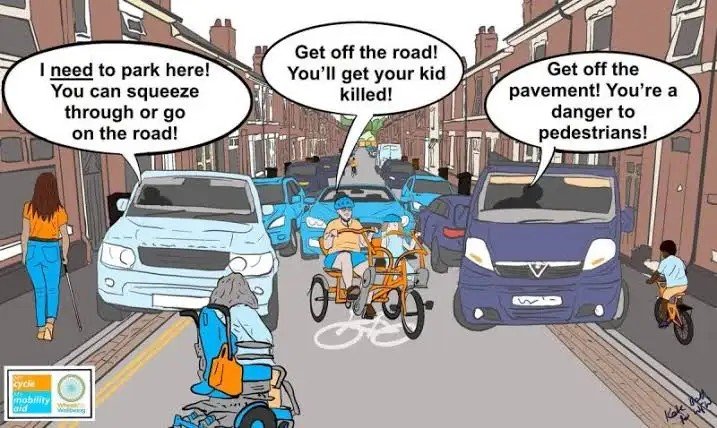What Makes a Five-Star Cyclist?
Cecily Michaels | Executive Director, Pedal Power ACT
At a recent road safety forum hosted by the Australasian College of Road Safety — Towards a Road User Assessment Program — I was invited to speak about what makes a “five-star” cyclist or motorcyclist. As someone who commutes and rides for leisure on both a bicycle and a motorcycle, it’s a question I’ve given a lot of thought to.
The truth is, there’s no fixed checklist that guarantees you’re a perfect rider. In fact, the idea of a five-star “rating” can be misleading, because it suggests a final destination instead of a mindset of continuous reflection and improvement. Instead of scoring ourselves, maybe we need to ask: are we riding in a way that makes the road safer for everyone — ourselves included?
The simplest part of this conversation is the legal stuff. In the ACT, cyclists must wear a helmet, have a working bell, use lights and reflectors at night, and alert pedestrians when approaching. These are the basic rules, and they exist for a reason — to reduce risk and protect us all. That said, being a responsible road user isn’t about ticking boxes. It’s about understanding why these things matter and taking responsibility for your choices, even when they’re not explicitly covered in legislation.
A good rider — whether on two wheels or four — knows they’re part of a shared space and adjusts their behaviour accordingly.
For me, awareness is everything. It was drilled into me when I was learning to drive: it’s not just about how well you can handle your vehicle — it’s about reading the road, anticipating what others might do, and being ready for the unexpected. There may be a child running out from between parked cars, a dog off-lead on a shared path, or a driver who genuinely didn’t see you because you weren’t in their mental model. (There’s even a psychological term for that: inattentional blindness.)
The best cyclists I know are the ones who assume they haven’t been seen and ride accordingly. They slow down around pedestrians and acknowledge others with a smile or a wave. They ride predictably and respectfully, knowing that calm, considerate behaviour helps everyone feel safer — and that when we feel safer, more of us ride.
Sometimes, using good judgement means navigating risky situations where the infrastructure simply doesn’t support safe, legal riding — and that’s a reality I’ve come up against here in the ACT. I occasionally find myself at a traffic light intersection where the bike path just ends, with no pedestrian button and no way for my bike to trigger the lights.
These are the kinds of moments where riders are forced to make real-time, safety-first decisions within an imperfect system. That’s what roadcraft — the skill, awareness, and judgement a person uses to stay safe and competent on the road — looks like in the real world.
There are growing calls for more mandatory safety gear — hi-vis, flags, daytime running lights, and even bans on certain roads. While well-intentioned, we have to ask: do these requirements actually make us safer, or do they just make cycling harder? These requirements put the responsibility on bikes, instead of on other road users who have the obligation to avoid colliding with all road users.
This mindset is called motonormativity — an unconscious cognitive bias in which the assumption is made that motor car ownership and use is an unremarkable social norm.
Real safety doesn’t come from dressing riders up like Christmas trees. It comes from better roads, smarter planning, and systemic change. Yes, individual responsibility matters — we should do what we can to be visible and predictable — but we can’t lose sight of the fact that safe systems, not just safe behaviours, are what ultimately protect us all.
So where does that leave us? If a five-star rating implies a finish line, then perhaps it’s the wrong metaphor altogether. We don’t need to be perfect — we need to be present, engaged, thoughtful, and constantly learning.
That means noticing our own habits, reflecting on our decisions, and asking ourselves honestly: is the way I’m riding making things safer for everyone on the road?
Because that — more than any star rating — is the mark of a great cyclist.



